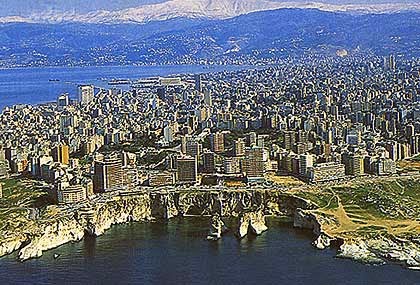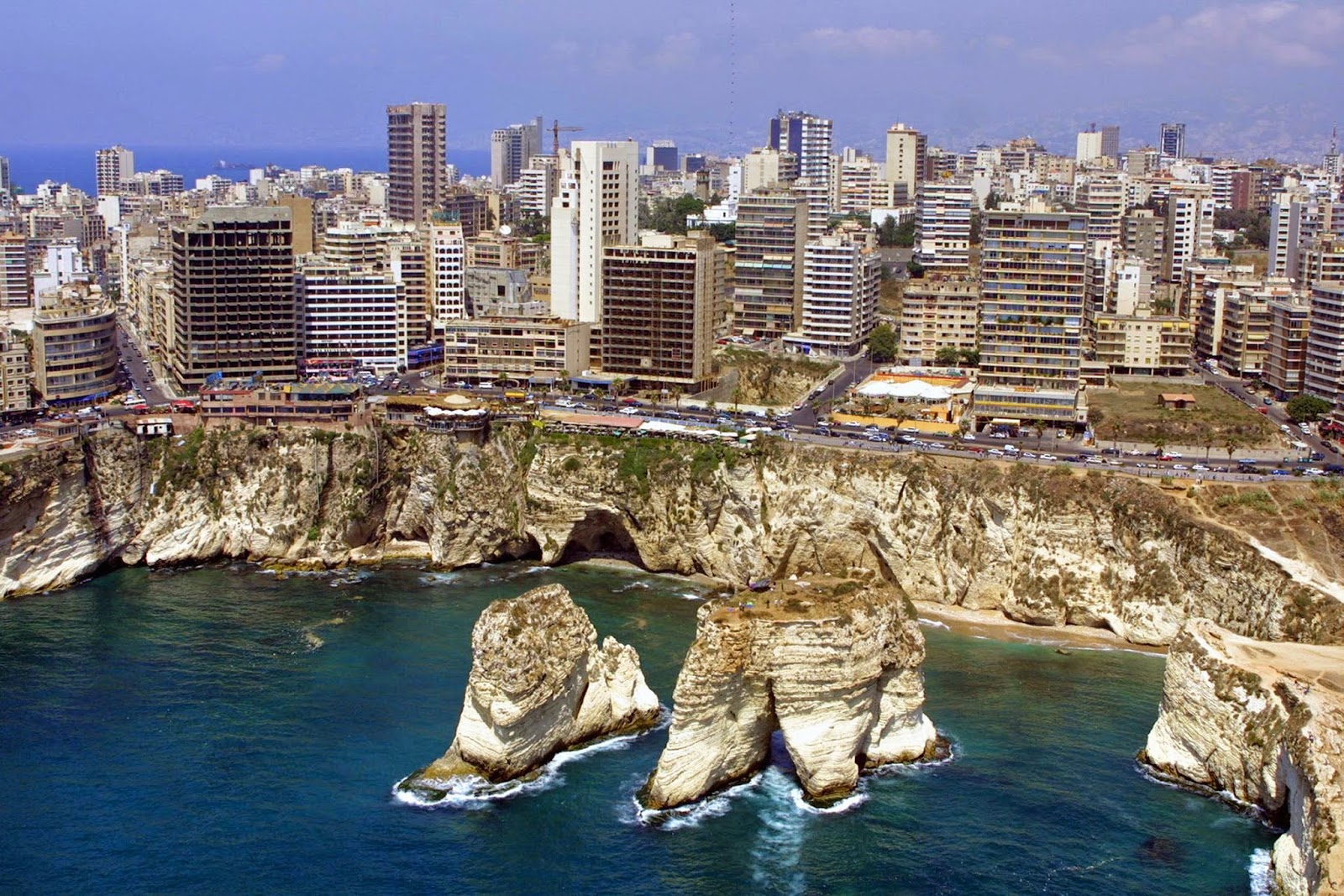Beirut J
 Beirut Bayrūt; Beirut; Peyrut Latin: Berytus; French: Beyrouth: Beyrut; Armenian:
is the capital and largest city of Lebanon.
As there has been no recent population census, the exact population is unknown;
estimates in 2007 ranged from slightly more than 1 million to slightly
less than 2 million as part of Greater
Beirut. Located on a peninsula at the midpoint of Lebanon's Mediterranean coast,
it serves as the country's largest and main seaport. The first mention of this
metropolis is found in the ancient
Egyptian Tell el Amarnaletters,
dating from the 15th century BC. The city has been inhabited continuously since
then. The Beirut River runs south to north on the eastern edge of the city.
Beirut Bayrūt; Beirut; Peyrut Latin: Berytus; French: Beyrouth: Beyrut; Armenian:
is the capital and largest city of Lebanon.
As there has been no recent population census, the exact population is unknown;
estimates in 2007 ranged from slightly more than 1 million to slightly
less than 2 million as part of Greater
Beirut. Located on a peninsula at the midpoint of Lebanon's Mediterranean coast,
it serves as the country's largest and main seaport. The first mention of this
metropolis is found in the ancient
Egyptian Tell el Amarnaletters,
dating from the 15th century BC. The city has been inhabited continuously since
then. The Beirut River runs south to north on the eastern edge of the city.
Beirut is Lebanon's seat of government and plays a central
role in the Lebanese economy, with many banks and corporations based in its Central District, Hamra Street, Rue Verdun and Ashrafieh.
Following the destructive Lebanese Civil War, Beirut's cultural landscape
underwent major reconstruction. Identified and graded for accountancy,
advertising, banking/finance and law, Beirut is ranked as a Beta World
City by the Globalization and World
Cities Research Network.








